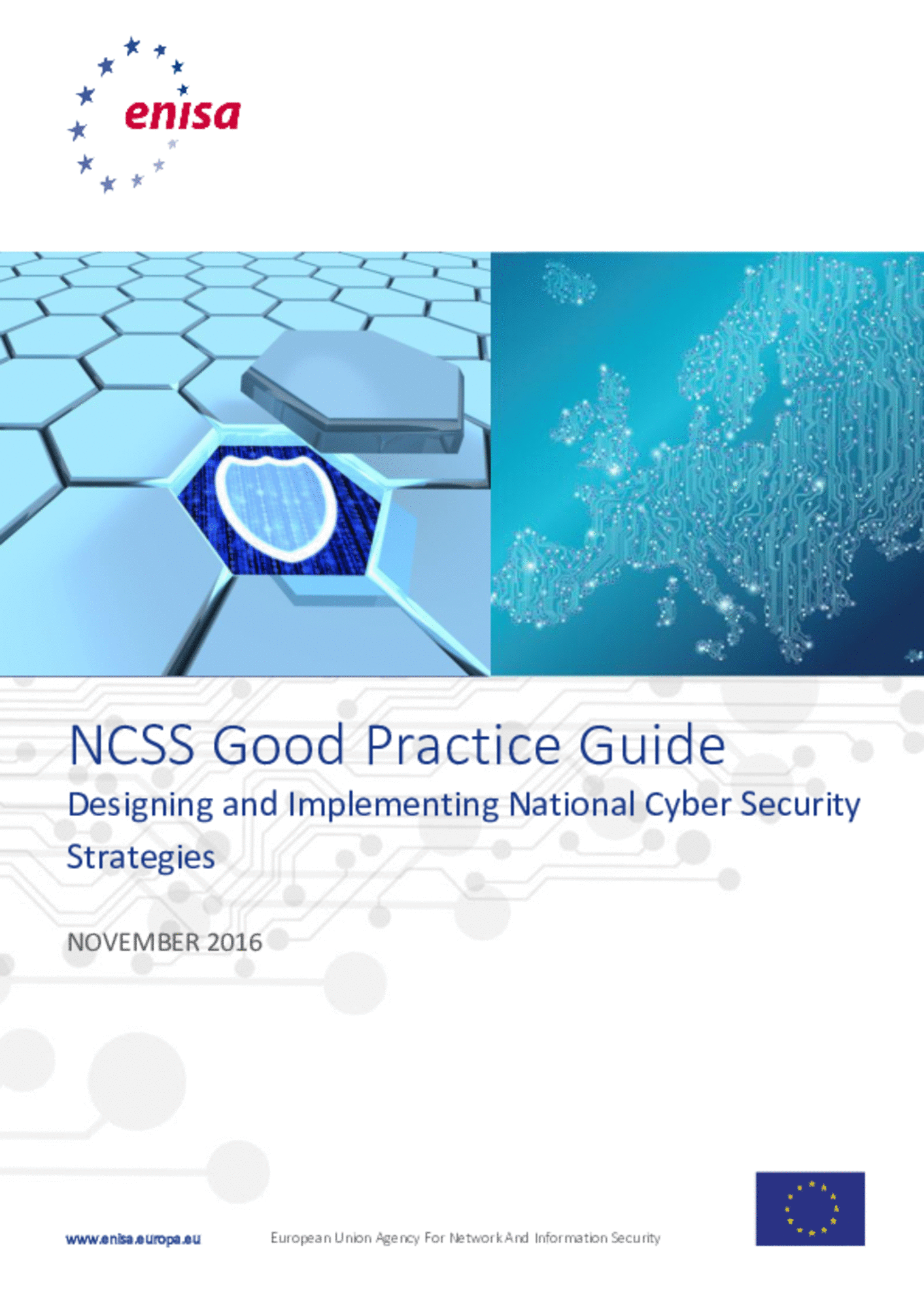Publication date:November 14, 2016
The guide presents six steps for the design and development of NCSS:
- Set the vision, scope, objectives and priorities
- Follow a risk assessment approach
- Take stock of existing policies, regulations and capabilities
- Set a clear governance structure
- Identify and engage stakeholders
- Establish trusted information-sharing mechanisms
In addition, fifteen objectives for the implementation of NCSS are described:
- Develop national cyber contingency plans
- Protect critical information infrastructure
- Organise cyber security exercises
- Establish baseline security measures
- Establish incident reporting mechanisms
- Raise user awareness
- Strengthen training and educational programmes
- Establish an incident response capability
- Address cyber crime
- Engage in international cooperation
- Establish a public-private partnership
- Balance security with privacy
- Institutionalise cooperation between public agencies
- Foster R&D
- Provide incentives for the private sector to invest in security measures
Search related content with: National Cyber Security Strategies





